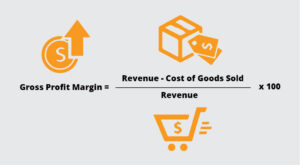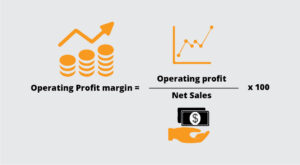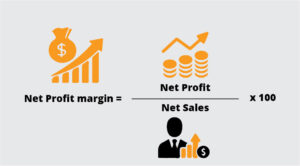How to Calculate Business Profits?
Starting a business is just the tip of the iceberg, along with running a business comes the parallel workload of managing the finances, tracking financial information, and calculating losses and profits of the business. It is crucial to learn how to assess the profit margin for your business and ways to improve your margins.
UNDERSTANDING PROFIT MARGINS
Firstly, to analyze margin you need to know what profit margin is.
Profit margin estimates the degree to which a company makes money. It represents the percentage of sales which has turned into profits.
For example, if an organization gains a 45% profit margin, then it means that it had a net income of $0.45 for each dollar of sales generated.
In simple terms, Profit margin evaluates the degree to which a company makes money. It acts as a measurement of an organization’s profitability.
There are three different types of profit margins to consider to gauge business:
-
Gross profit margin

The gross profit margin is the easiest profit margin to calculate. It may not reflect other major expenses. A good profit margin generally varies by industry, but approximately 1% of the net profit margin is determined as average, a 20% profit margin is considered high or good and a 5% profit margin is considered very low.
-
Operating profit margin

Operating profit margin includes administrative costs, operating costs, and sales expenses. Operating profit is calculated by subtracting all COGS (Cost of Goods Sold), amortization, depreciation, and all operating expenses from total revenues. In simple words, operating profit margin is the percentage of operating profit derived from total revenue. For example, a 25% operating profit margin is equal to $0.25 operating profit for every $1 of revenue.
-
Net profit margin

Net profit margin is the most difficult type of profit margin to track, it takes into account all expenses, as well as income from sources such as investments. Net profit, also known as net income can also be defined as gross revenue minus all other costs, including COGS, operating expenses, interest, taxes, and other expenses.
WORKING OF PROFIT MARGIN
There are 3 stages of profit margins, gross profit, operating profit, and net profit. These margins are reflected on a company’s income statements in the following order.
A company takes in sales revenue then pays direct costs of the product or service. What’s left behind is gross margin. Then it pays indirect costs like company advertising. Now remains the operating margin, it pays interest on debt and adds or subtracts any charges that are not related to the company’s main business with pre-tax margin-left. It pays taxes further, leaving the net margin also called the net income.
Moreover, if the gross profit margin and operating profit margin are healthy but the net profit margin shows issues with the bottom line, then a business cuts its nonessential operating costs and overhead.
HOW TO CALCULATE THE PROFIT MARGIN
There are multiple ways to calculate a company’s profit margin ratio.
However, we present the simplest yet effective one:
-
Calculate the net sales
The first step is to determine the company’s net sales by following this formula:
Net sales = revenue – returns, refunds & discounts
-
Determine the net income
Next, you have to calculate the net income by using this formula:
Net income = revenue – total expenses
-
Find the profit margin ratio
After calculating the net income and net sales, you find the profit margin ratio by employing this formula:
Profit margin = (net income / net sales) x 100
KEEP UP THE PROFIT MARGIN
It is difficult to acquire a profit margin in your business and it is even more tricky to maintain that margin in order to gain continuous profit.
-
Focus on strategic ideas
A successful business thrives on strategic ideas that stand out in the market and answer the customers’ questions.
-
Identify what’s not working
Refining and deleting techniques that aren’t working for your business saves time and finances of the production and accelerates profits.
-
Prioritize higher-end products
In order to gain profit and overall margin numbers, focus on products that sell best and deliver the highest profit. Quality products inspire loyalty as well as enhance revenues.
-
Streamline your operations and reduce operating expenses
A favorable way to streamline your operations is to automate specific tasks in your business. By putting repetitive activities on autopilot, you can reduce the time, manpower, and operating expenses required to run the company.
-
Increase your average order value
Increasing the average order value (AOV) from shoppers already in your store is a great way to improve your profits. You’ve already invested in getting them to your location; now figure out ideas to maximize their spending.
As the runner of the company, you should always know how your business is spending money. One of the significant steps in improving your profit margins is tracking finances. If you plan to cut costs and eventually improve your profit margins, start recording every expense.



